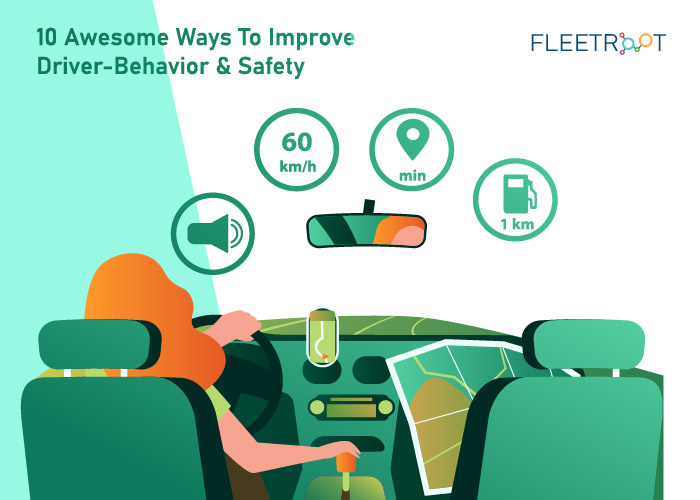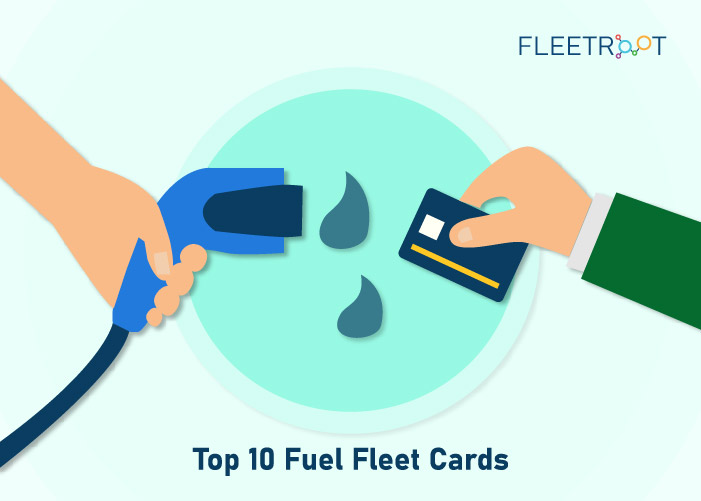- Whether you are planning to manage a fleet business or already have one, then you might be aware of one aspect that is important to run a successful business – Drivers.
Drivers play an essential role in keeping your business up and running. It’s their safety and driving patterns that determine how far your fleet management business can go.
In this post, we are listing down some of the best practices you can follow to improve driver behavior and safety.
Improve Driver Behavior and Safety
1.Create No-distraction Driving Policy
Along with other safety policies, creating a no-distraction driving policy is also important. There are many instances when your drivers may indulge in other activities while driving. These activities are illegal and may result in unwanted mishaps.
The primary reason for this policy is to prohibit your drivers from using mobile devices while driving. It includes making or receiving calls plus reading and responding to text messages.
2.Use Telematics
Many fleet businesses implement telematics but neglect to utilize the data collected, they miss several opportunities and benefits. Turning collected data into actionable insights is the initial step to improving driver behavior.
With telematics, you can track routing, acceleration, braking, and speeds in real-time. Also, you can check the areas that need the most help and use your data to strategize safety measures to address issues.
3.Train the Drivers
The most effective way to manage driver behavior safety is by educating them and making them aware of the safety policies and best driving practices. Show them the realities of unsafe driving, over-speeding, distracted driving, and poor behavior. Encourage your drivers to perform better, and it will lead to positive changes in their practice.
4.Motivate Drivers
You can offer appropriate incentives to motivate the individual driver’s performance. You can create a driving program that provides incentives to enhance driving patterns. These incentives can uplift better driving and compliance.
5.Use Alert System
You can correct poor driving through immediate feedback. Many fleet management system have features to alert drivers and management whenever there’s any breach in safety rules.
If your driver is driving rash or in the wrong lane, or not leaving proper distance to the other vehicle, and alert can inform the driver. These alerts will help management keep track of their driver’s behavior and break their poor driving habits. You can also customize these alerts based on the technology used and fleet setup.
6.Check Records of the Vehicle
It’s suggested that you should check the driving records of the employees who drive your fleet. The reason is that you can filter out those who have a poor driving history, and this can help you avoid many problems for the future.
7.Create a Safety Policy
First of all, get some senior management and employees onboard. Write down all the policies and procedures and communicate them to the employees.
Also, include a written statement in the driver safety policy outlining your company’s commitment to reduce traffic-related crashes, injuries, and death.
Both your managers and drivers should sign this policy, and it should be reviewed with your employees regularly. Your drivers need to sign an agreement depicting that they understand the traffic rules and regulations, procedures, and expectations.
8.Maintain Your Vehicles
When your vehicles are timely maintained, it increases the performance of your vehicles. After some kilometers, you should do the proper oiling, brake tightening, and also check the tire pressure. Besides, check if all hoses and plugs are in the proper working condition.
Maintaining your vehicles not only prevents breakdowns and reduces downtime, but also helps prevent crashes. Maintenance is a critical part of fleet management, and you need to perform maintenance checks regularly.
9.Know the Safe Braking Distance
The bigger the vehicle, the longer it will take to stop. In contrast to a five-seater car, an 18-wheeler lorry will take 40% longer to stop. For new drivers who have experience of driving light-motor vehicles, it may take time to understand the appropriate braking distance while running a heavy vehicle. So, they need to learn and practice this every day to avoid any mishap while using it for moving a crucial consignment.
10.Avoid Overtaking
Overtaking is the most significant cause of collisions and accidents. Drivers can avoid such instances by keeping the distance from these kinds of drivers on the road and follow the lane driving.
Your driver shouldn’t forget to use a turn indicator whenever they have to take a turn. It helps the vehicles behind them keep a safe distance from their vehicle and avoid tailgating. When they follow all the traffic rules, they will reduce the chances of accidents by 90%.
A fleet driver management system can help you keep track of the overtaking your driver does.
Importance of Safe Driving
Drivers are valuable assets for your fleet management company. One of the critical aspects of their training is to develop a safe driving attitude. This behavior isn’t developed abruptly, but it’s a gradual process.
For safe driving, drivers must have control of their emotions and behavior.
They should accept responsibilities for their driving decisions and practice defensive driving techniques.
These practices demonstrate maturity and trustworthiness.
Safe driving is vital for your organization’s and drivers’ well-being. When your drivers behave properly and are safe, you don’t need to search for the new hires. In this way, you will retain your old and reliable employees for a longer time and keep your business alive and kicking.
A driver management system is the best way to notice your employees’ driving habits and improve those whenever needed. So, go digital and enhance the way you manage the fleet business.




